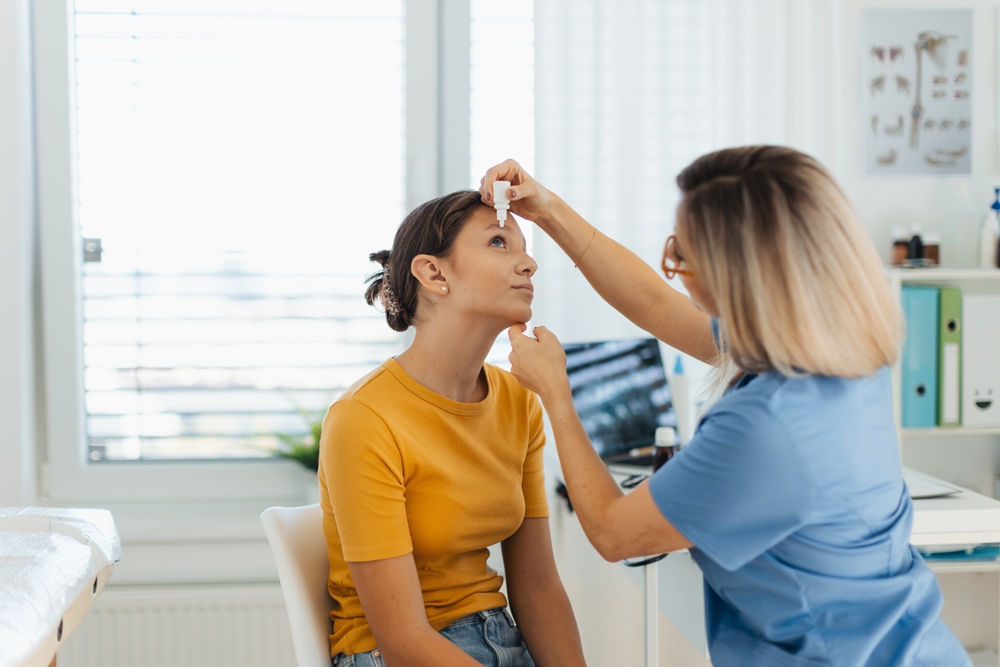
Dry eyes can be a frustrating and uncomfortable condition that affects millions of people worldwide. If you're one of them, you're likely searching for effective ways to manage your symptoms and find relief.
Understanding Dry Eyes and Its Causes
Dry eyes is a chronic condition that occurs when your eyes don't produce enough tears or the tears evaporate too quickly. This can lead to a variety of symptoms, including irritation, redness, and a burning or gritty sensation in the eyes.
There are several factors that can contribute to the development of dry eyes, including:
- Age: As you get older, your tear production naturally decreases, making you more susceptible to dry eyes.
- Gender: Women are more likely to experience dry eyes, especially during hormonal changes like pregnancy or menopause.
- Medications: Certain medications, such as antihistamines, decongestants, and antidepressants, can reduce tear production.
- Environmental factors: Factors like low humidity, air conditioning, and staring at digital screens for long periods can all exacerbate dry eye symptoms.
- Underlying medical conditions: Conditions like Sjögren's syndrome, rheumatoid arthritis, and diabetes can increase the risk of developing dry eyes.
Understanding the underlying causes of your dry eyes is the first step in finding the right treatment.
Symptoms of Dry Eyes
Dry eyes can manifest in a variety of ways, and the symptoms can range from mild to severe. Some of the most common symptoms include:
- Redness and irritation in the eyes
- A burning, stinging, or gritty sensation
- Sensitivity to light or wind
- Blurred vision or eye fatigue
- Excessive tearing
- Difficulty wearing contact lenses
If you're experiencing any of these symptoms, it's important to seek medical attention to determine the underlying cause and develop an appropriate treatment plan.
Diagnosis and Identification of Meibomian Gland Dysfunction (MGD)
One of the leading causes of dry eyes is a condition called meibomian gland dysfunction (MGD). The meibomian glands are responsible for producing the oily component of your tears, which helps to prevent evaporation. When these glands become blocked or dysfunctional, it can lead to a deficiency in the lipid layer of the tear film, resulting in dry eyes.
To diagnose MGD, your optometrist may perform a comprehensive eye exam, including:
- Slit-lamp examination: This allows the doctor to closely inspect the eyelids and meibomian glands for signs of blockage or dysfunction.
- Tear film analysis: Tests may be conducted to measure the quantity and quality of your tear production.
Once MGD has been identified as the underlying cause of your dry eyes, your doctor can then recommend the appropriate treatment options.
Traditional Treatment Options for Dry Eyes
Depending on the severity of your dry eye symptoms and the underlying cause, your eye care professional may recommend one or more of the following traditional treatment options:
- Artificial tears: Over-the-counter eye drops or lubricating gels can provide temporary relief by supplementing your natural tear production.
- Prescription eye drops: Prescription medications, such as anti-inflammatory or immunosuppressant eye drops, can help reduce inflammation and increase tear production.
- Warm compresses and lid hygiene: Applying warm compresses to the eyes and gently cleaning the eyelids can help unclog the meibomian glands and improve tear quality.
- Punctal plugs: These small devices are inserted into the tear ducts to help conserve the natural tears in your eyes.
- Dietary supplements: Omega-3 fatty acids and other supplements may help improve the quality of your tear film.
While these traditional treatments can provide some relief, they often only address the symptoms of dry eyes and do not address the underlying causes. OptiLight is a cutting-edge, non-invasive treatment that targets the root causes of dry eyes, including meibomian gland dysfunction (MGD). This innovative therapy uses precise, controlled pulses of light to gently heat and open the blocked meibomian glands, allowing them to function more effectively and restore the natural balance of your tear film.
The Benefits of OptiLight for Effective Dry Eye Relief
Unlike traditional dry eye treatments that only provide temporary relief, OptiLight addresses the underlying causes of dry eyes, offering long-lasting results. Some of the key benefits of this breakthrough therapy include:
- Improved tear film quality: OptiLight helps to restore the natural balance of your tear film, reducing evaporation and improving overall eye health.
- Reduced inflammation: The precise light therapy can help to reduce inflammation in the meibomian glands, further improving tear production.
- Enhanced meibomian gland function: By unclogging and improving the function of the meibomian glands, OptiLight helps to ensure a steady supply of high-quality tears.
- Long-lasting relief: Many patients report a significant and sustained improvement in their dry eye symptoms after just a few OptiLight treatments.
If you're struggling with persistent dry eye symptoms, OptiLight may be the breakthrough solution you've been searching for.
Finding the Right Treatment for Your Dry Eyes
Dry eyes can be a frustrating and debilitating condition, but with the right treatment approach, you can find relief and regain control of your eye health. From traditional treatments like artificial tears and prescription eye drops to the innovative OptiLight therapy, there are numerous options available to address the root causes of your dry eyes.
If you're tired of dealing with the discomfort and disruption of dry eyes, schedule a consultation with Family Vision Clinic to explore your treatment options and take the first step towards lasting relief. With the right approach, you can say goodbye to dry, irritated eyes and hello to a more comfortable, vibrant vision. Visit our office in Wilmington, North Carolina, or call (910) 392-4414 to book an appointment today.









